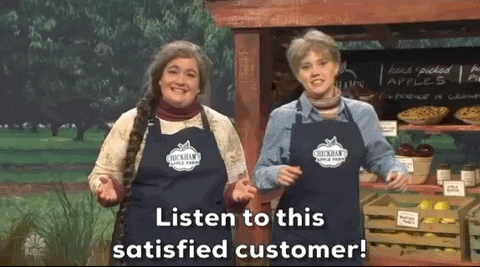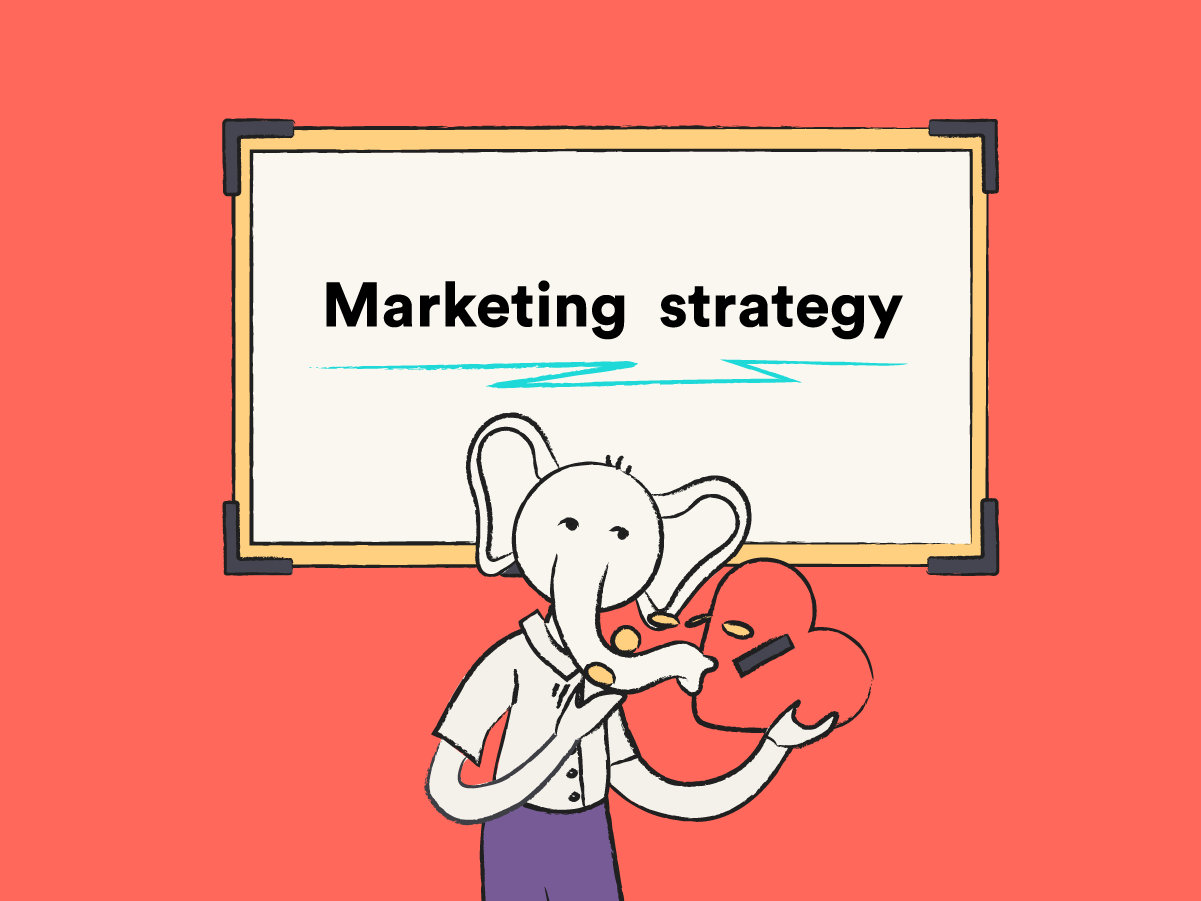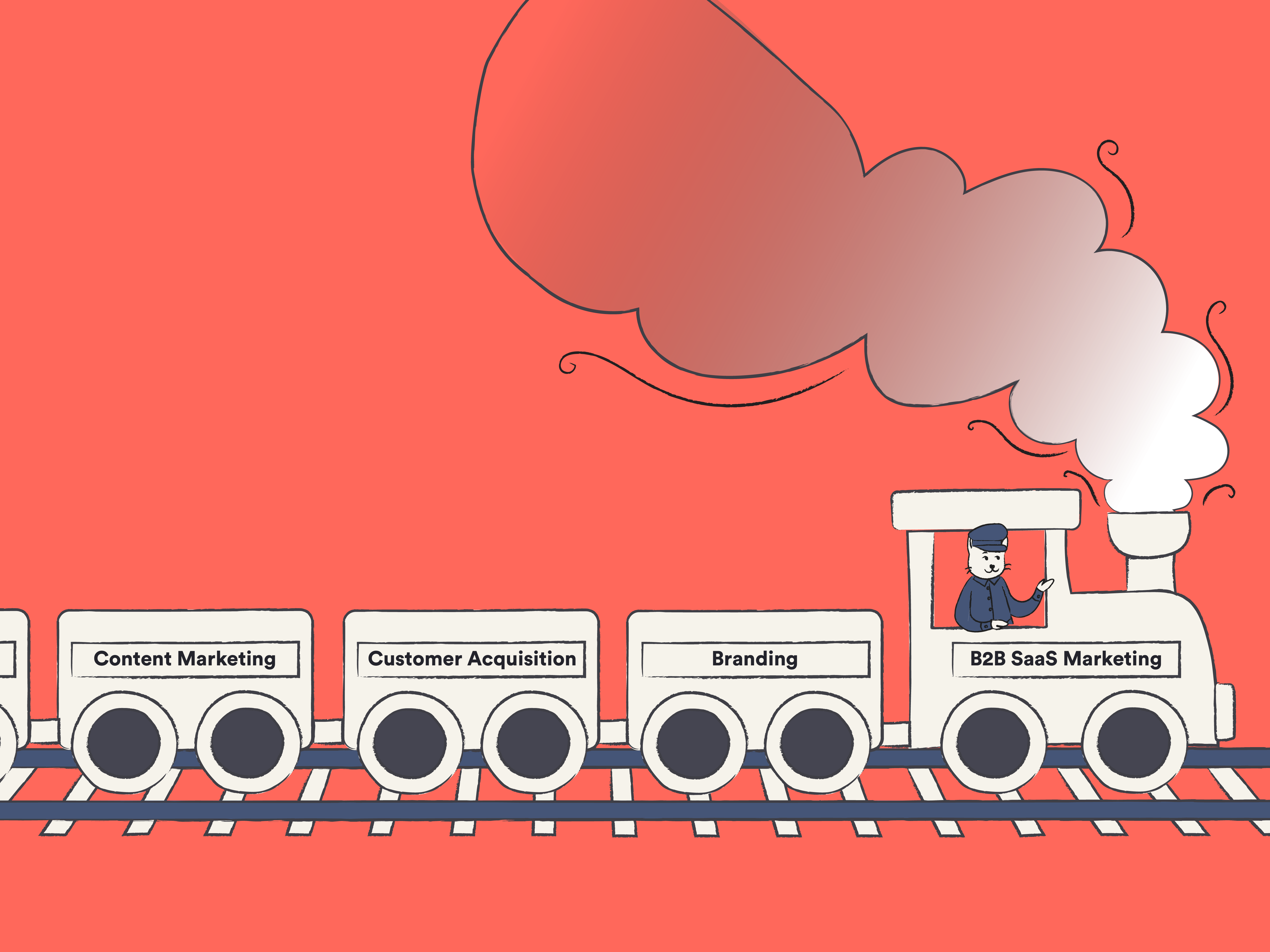Creating a successful marketing strategy for a nonprofit might seem tricky. Asking for time and money with nothing to offer in return (apart from your word) is difficult. People need to build an emotional connection in order to donate.
This means a standard marketing strategy won’t do. You’re not selling a product. You’re telling a story. Whether you’re starting out and making a name for yourself or you’re already established and need to encourage continuous support, make sure you follow these 7 nonprofit strategies on a long-term basis:
- Build a social media presence based on your target audience
- Use the power of content marketing
- Take advantage of free digital marketing perks
- Create a regular email marketing newsletter
- Sell merchandise
- Leverage word-of-mouth marketing
- Host unique events
1. Build a social media presence based on your target audience
Social media marketing is one of the most powerful tools at your nonprofit’s disposal. It’s a free way to connect with your target audience on platforms where they’re most active. Of course, you have to know who this demographic is first.
According to HubSpot, effective marketers use good old manual research tactics. While ineffective marketers focus on buyer personas. (Side note: these can work, but only if they’re based on real, meaningful data.)

One of the most popular uses for social media is brand awareness. But this doesn’t mean having profiles on every platform for the sake of it. You need to be selective with the social media accounts you create.
LinkedIn is a great one to have for credibility. But think of your target audience—which social media platforms do they hang out on? Where can you be sure you’ll be consistent?
Once you’ve chosen your platforms, it’s time to start building a presence. Here are some tips:
- Keep your accounts and profiles updated and looking sharp
- Make use of visual content and provide value whenever you post
- Tag and mention other nonprofits, brands, and people
- Create a hashtag campaign that encourages user-generated content
- Be consistent and reply to comments/tweets/tags
- Get involved in as many relevant conversations as you can to get your name out there
- Pin your most important campaign to the top of your profile
We're #SickofSewage! Are you? 🤢
It's time to #EndSewagePollution. Pledge your support for cleaner rivers and seas, and fight back against the profiteering water industry. ✊ 🌊
Join SAS today: https://t.co/hK9zGlPCWT
📷 PA Media pic.twitter.com/mhWoleLZxX
— Surfers Against Sewage (@sascampaigns) November 24, 2022
2. Use the power of content marketing
You’ve likely heard of search engine optimization (SEO). It sounds complicated. But it’s a simple concept and a digital marketing strategy your nonprofit can seriously benefit from. (You may already be without realizing.)
Content marketing plays the long game. Instead of outreach, it helps potential donors find you. And all it takes is regularly writing for a blog on your website. This form of content means you can document the work you do as an organization, who it benefits, and why you do it.
You can also focus on common questions or interest points, which will increase your chance of backlinks. This is when another website links to your content. Google recognizes this and ranks your site higher based on the number of backlinks you have. This means your website will be visible to more people, increasing your conversions.

Another way content marketing can create conversions is by ending articles with a call to action that leads people to your donation page. They are more likely to click through if they have just read an article that built an emotional connection with your nonprofit.
Start with articles and blog posts. Work your way up to webinars or even a podcast. The more types of content you create, the more people you’ll attract. Of course, campaign updates should be integral to the content you publish, but don’t be afraid to make a fun video jumping on a TikTok trend (depending on the subject matter you’re dealing with) or interview a prominent figure in the industry on a podcast.
3. Take advantage of free digital marketing tools and perks
There are a lot of marketing channel perks that for-profit businesses don’t get and a lot of nonprofits don’t know about. These are incredibly helpful and valuable for your organization, so take advantage!
Google Ad Grants
Paid ads and marketing campaigns can be expensive. But they are also very effective. Google claims that for every $1 spent on Google Ads, $8 is returned. This is a huge ROI. But imagine if you didn’t have to spend that $1? Well, this is the reality for a lot of nonprofits, thanks to Google Ad Grants.
They offer each qualifying nonprofit access to $10,000 per month of search ads shown on Google.com. When 89% of a buyer’s journey starts with a search engine, this offer is sure to increase your website traffic and subsequent conversions. Check out our full guide on how to run a Google nonprofit ads grant to get started.
Let’s take a look at a case study. The Samaritans, an organization that offers a 24/7 support helpline for people struggling with their mental health, set up a conversion tracker to see how effective their Google Ad Grants account was. In just one year, the ads had driven over $48,000 in donations. This accounted for 10% of their online donations, which is an incredible percentage.
There are some criteria to meet in order to be eligible for this. You can see the full list here, or see below the requirements for U.S. nonprofits.

Canva
If anyone on your nonprofit marketing team is arty (or even if they’re not), Canva is a great tool to help create professional-looking content. They make it super simple to build infographics, social media posts, and formatted images.
You can even create a style guide to ensure every new piece of content you make uses the correct font, logo, and color palette. This means your digital marketing will have a clean, well-designed, and consistent look, which will help people recognize your brand.
They also offer 100% free Pro plans for nonprofits, so what are you waiting for?

Buffer
It’s likely you won’t have time to spend hours creating a watertight marketing calendar every week and keeping up to date with it. After all, you’re a nonprofit. You have more important things to do. This is when scheduling tools like Buffer can be a lifesaver.
You can link Buffer to all of your social media accounts and line up posts for each one for the rest of the month, or longer. This means that just one day of hard work can produce a month’s worth of great, consistent content.
If you want to go a step further and switch on to autopilot, Buffer will post on your behalf so you can sit back and relax. However, This is a paid-for feature. But don’t worry! They offer a 50% discount to all nonprofits, making it very affordable.

4. Create a regular email marketing newsletter
Direct mail is a classic nonprofit marketing strategy. But it may not fit your budget or the organization’s mission. Building a paperless email list eliminates the significant cost of postage and will probably reach more people.
Here are some great benefits of email campaigns:
- Use the power of automation for welcoming new donors: you can create personal connections by setting up an automatic but customized email that thanks and welcomes new donors. It can contain links to specific web pages, social media accounts, and how their donation has helped you.
- Templates don’t have to be impersonal: It’s a common assumption that templates are standardized and impersonal. But not anymore. Personalized subject lines, introductions, and call-to-actions can make donors feel more valued.
Easy to track clicks, open rates, and other important metrics: Keeping an eye on the success of your email campaigns has never been easier. You’ll be able to see just how well it’s working and what needs to change in order for it to improve.

As you can see from the infographic above, email marketing is only growing in popularity. An incredible 38.5% of mobile time is spent checking emails, and 43.5 million consumers check their email on a daily basis. This is a huge audience to connect with, so make sure your communication is formatted to be mobile-friendly.
A great company that offers a free package is Mailchimp. Their paid-for packages obviously offer some great features. However, if you’re just getting started or want to test out how effective email marketing can be, then their free option will be suitable. It allows you to send 2500 emails a month, alongside lots of customizable templates and analytics. If you like their style and want to upgrade, they offer nonprofits a 15% discount.
5. Sell nonprofit organization merchandise
Online marketing can take a physical form too. Just because you’re a nonprofit doesn’t mean you can’t create merchandise. Take a look at Cats Protection’s adorable T-shirts.

This is an excellent fundraising effort. You can create opportunities for your organization to be seen every day, which is pretty much free advertising. It’ll also help your donors and supporters build a recognizable community and make them feel like part of the nonprofit. This means they’re more likely to consistently donate and tell more people about you.
You can also create exclusive merchandise that’s released alongside particular campaigns. This limited-edition marketing can build a following in itself, so it’s worth trying out.
Each purchase can count towards your online donations, making it super effective in raising money. However, there’s a lot to think about when considering selling merchandise, so ensure you take the following into account:
- How will you ship it?
- What kind of merchandise do you want to sell?
- What will be the budget for the creation of merchandise?
- Will this be ongoing, or is it a one-time campaign?
- How will you market the merchandise?
- Who will design it?
6. Leverage word-of-mouth marketing effectively
Nonprofits have a harder job of gaining people’s trust than other businesses. Most of the time, people aren’t getting anything physical in exchange for their money. They’re paying for the promise that you will do good on their behalf.

This is why each donation or conversion counts. The people who donate want to know the value of the money they have given. You need to show them that they are needed and appreciated. If you create a positive experience, they are more likely to tell people about your organization. Here are a few ways to make them feel valued:
-
- Make contact with a personal thanks: This doesn’t have to be a handwritten email to every donator. Use an automated template that is customizable and make it personal.
- Tell them how they have helped: Let them know exactly what their money will be helping—current projects, what you’ve done so far, and what you plan to do.
- Create a membership: If they donate, they can be part of an exclusive membership. This means they will get updates on what you’re working on, magazines or even merchandise.
Word-of-mouth marketing efforts may not be the most measurable idea. But it can contribute towards a constant stream of new supporters and advocacy. If you recruit volunteers, you can have more people out in towns and cities spreading the word.
Another word-of-mouth technique is to create a compelling narrative that’ll help get volunteers dedicated to the cause. You can do this on both your content marketing and your social media presence in the following ways:
- Video blogs taking you through a standard day at the organization
- Testimonials or case studies of people or causes you have helped
- Informative content showing the issue you are supporting
Let’s stick with Cats Protection as our example. Take a look at their Youtube video:
Now, it may be slightly easier to get people on your side because everyone loves a cat video. However, this piece of content is a great example because it shows the centers for cats, it tells us what they have been doing, and it creates an emotional connection. All of this works together to make people more likely to share the video with their friends and donate.
7. Host unique events and fundraising campaigns
Fundraising events and initiatives are a no-brainer for nonprofits. But do you know why they’re so effective? It’s all to do with something called the time-ask effect.
When you mention giving money early on, donors think more critically about their own resources. But when you ask people to share their time first, the experience evokes emotion. And this emotional connection has proven to motivate people to give more than if they’d been directly asked for money in the first place.

Pretty much all nonprofits offer volunteer opportunities. But how do you convince people to spend their time with you? It’s all in the type of event you arrange.
UK nonprofit Surfers Against Sewage has an ongoing “Million Mile Clean” that mobilizes 100,000 people each year to get out there and protect the beaches, streets, rivers, parks or mountains they love.

U.S. charity Feeding America encourages people to organize their own food drives. This doesn’t involve giving money. It’s all about the community coming together and donating cans of food. This is a classic example of time over money.
On their website, they encourage people to coincide their food drives with a party or sports game. To enter, you have to donate a can. It’s a great way to spread the word, mobilize a community, and receive donations for your cause.

If you want some more ideas, check out this list of 150 suggestions from Funraise. Including:
- Farm-fresh feast fundraiser
- Lip sync for your life
- Foraging walk
- Science fair
- Pizza bake sale
Whatever you pick, just make sure it’s relevant to your mission. And more importantly, it’s fun!
Time to give your nonprofit marketing plan a shake-up
Nonprofit marketing goals should focus on increased awareness. Donations and conversions are obviously important, but without people knowing about you, you’ll get nowhere. So it’s essential you build relationships with communities, let them know what you do, and nurture these connections.
Once established, you can start working on these 7 marketing strategies. It may take some time and effort, but it’ll be well worth it when your organization begins to steadily grow. There are plenty of tools at your disposal to help you, offering exclusive discounts for nonprofits. So be sure to check them outt before you decide on your strategy.









